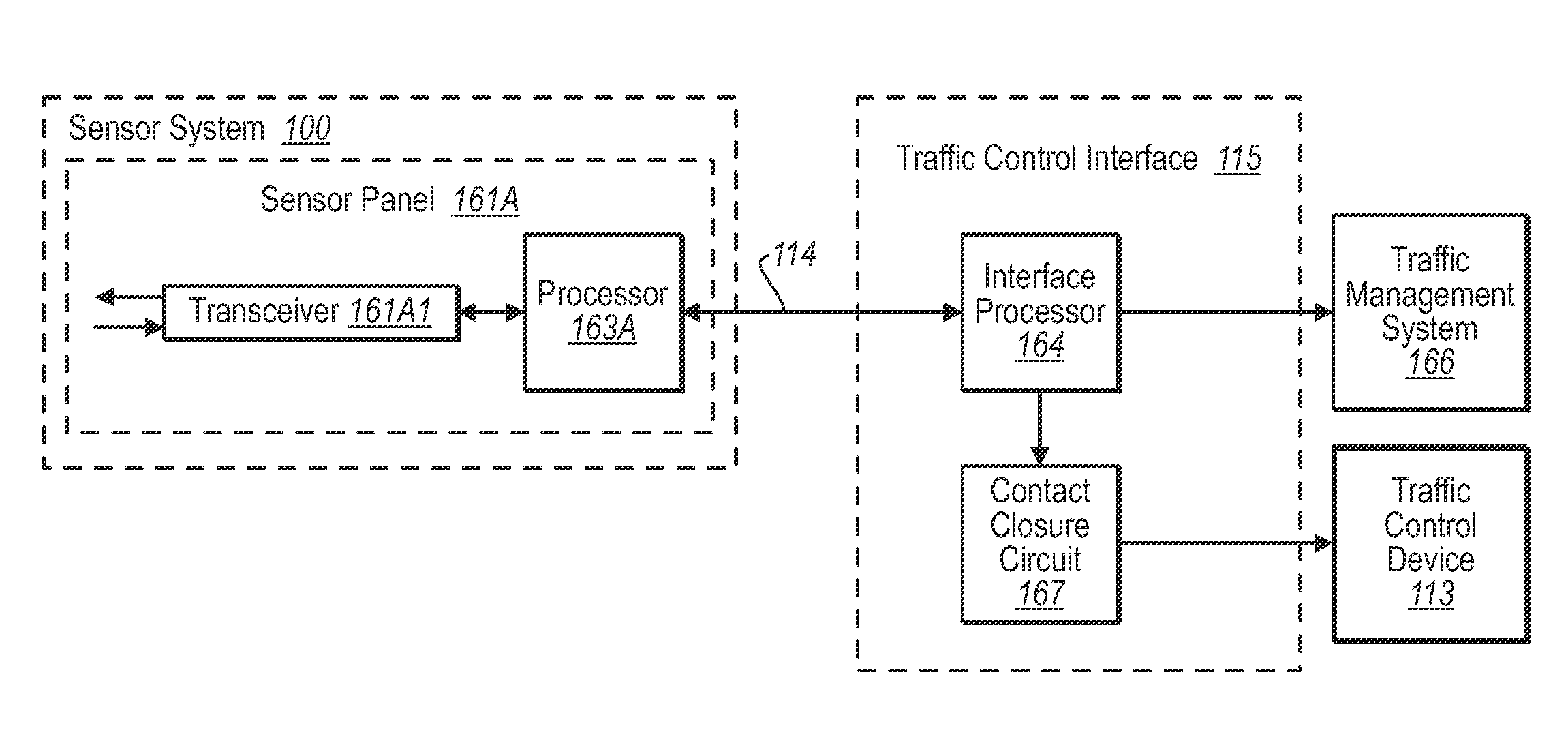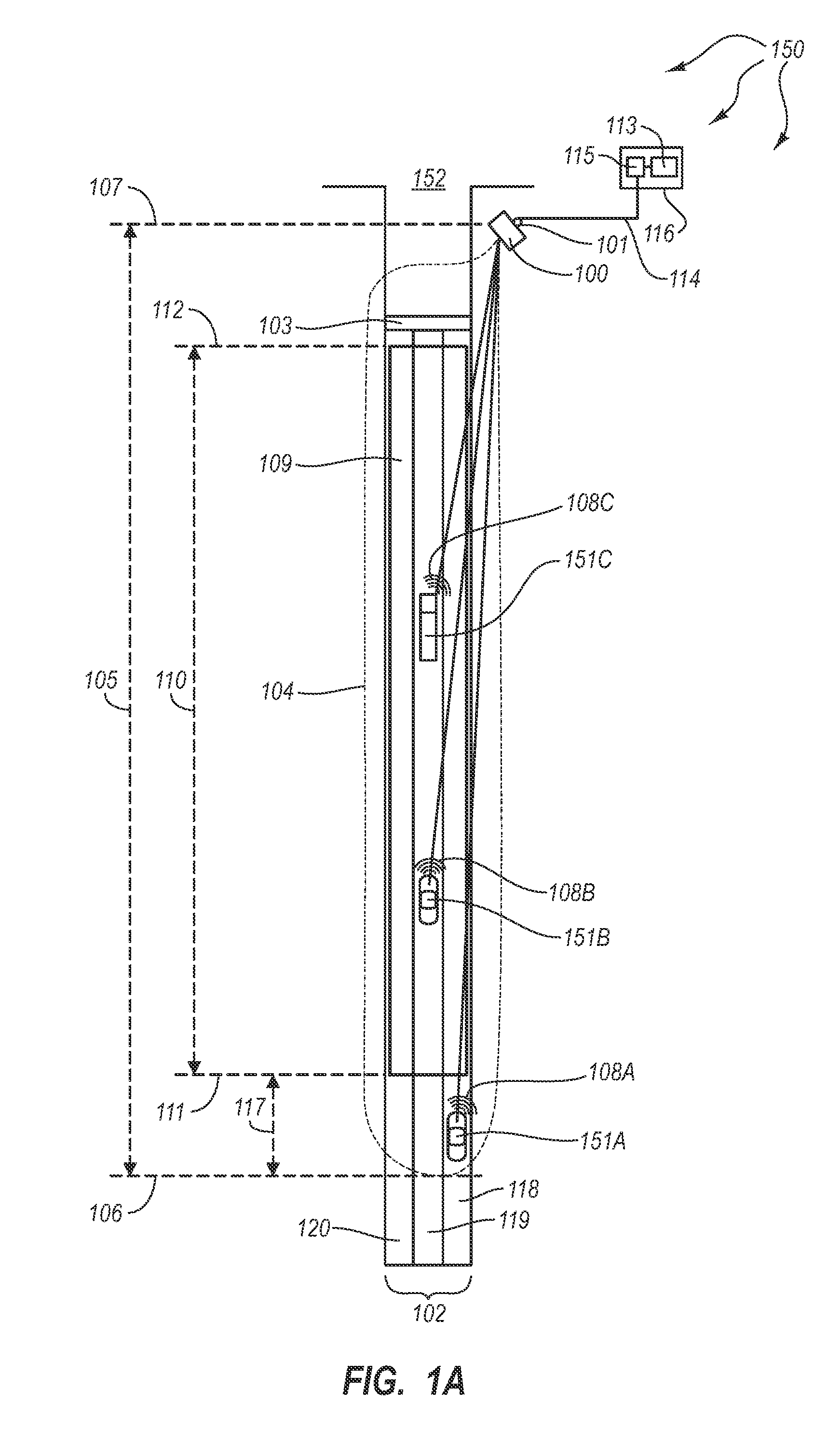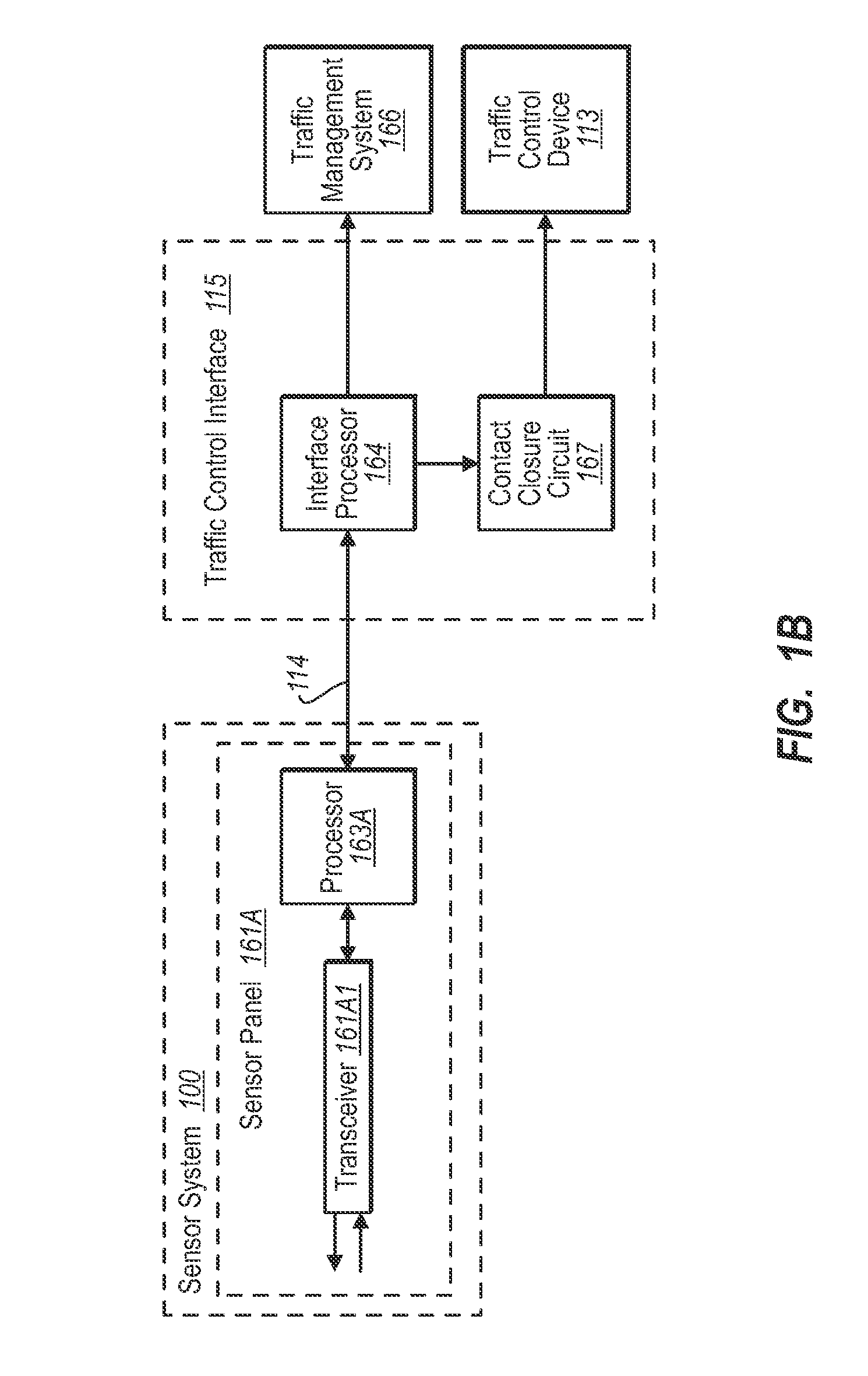Congestion-based delay, fuel consumption, and pollution at signalized intersections are increasing problems worldwide as the number of vehicle-miles traveled increases year after year.
In addition, the number of collisions that result in death, personal injury, and property damage at signalized intersections has increased in recent decades.
However, if the time duration between signals is longer, the active movements are not estimated to be operating near capacity and may be terminated if there is competing demand on a conflicting movement.
However, it is recognized by traffic officials that the installation of traffic signals also increases the frequency of the relatively less hazardous rear-end collisions.
These rear-end collisions are more dangerous at intersections where vehicles travel at high speeds.
In cases where the duration of amber is not long enough to provide a safe option to stop or go, the driver is in a physical dilemma.
Unfortunately, removal of this preventable predicament does not eliminate the dilemma zone.
The presentation of two potentially safe options can reduce the predictability of the driver's choice and may actually be dangerous in some cases.
If the lead vehicle can decelerate faster than the following vehicle, this can be problematic when the time headway is small.
Factors such as the mindset of the individual drivers and their reaction times also complicate the choice to stop or go.
With all the factors involved, one cannot reliably predict the behavior of drivers who are within about three to five seconds of reaching the stop bar when the signal light turns amber.
As a result, drivers traveling 70 mph or faster have a speeding problem first and foremost.
However, when conflicting demand arrives on other traffic movements at a signalized intersection, these vehicles cannot be delayed indefinitely.
During the window of time before the maximum green limit is reached, the natural time headway between vehicles is often likely to span the dilemma zone.
At some intersections the rate at which sufficient headways will appear during peak hours of traffic flow is not consistent or sufficient, and so the maximum green limit can dynamically increase or decrease.
However, at least one disadvantage of incident detection is that the collision has already occurred, and the safety of the motorists and efficiency of the traffic network have already been disrupted.
Thus, incident detection is less effective than green extension because traffic conditions are detected too late.
As a result, while green extension mechanisms have been shown to reduce the number of rear-end and right-angle collisions at an intersection by monitoring time headway in advance of the stop bar, incident detection mechanisms have not.
However, at least one disadvantage of red extension mechanisms is that they do not reduce the number of red-light runners.
In fact, red extension mechanisms reward red-light runners with additional time to clear the intersection, and may increase the frequency of red-light running over time.
Another disadvantage of red extension is that it only detects one type of traffic conflict shown to be reduced by green extension mechanisms.
The other conflicts include: acceleration through yellow, brakes applied before passing through intersection, vehicle skidding, swerve to avoid collision, and abrupt stop.
Another disadvantage of red extension is its reliance upon an additional red-light controller unit necessary for integration with many traffic controllers.
One disadvantage of using a presence detector for green extension is that the detector cannot distinguish between flowing traffic and traffic at a standstill.
This can unnecessarily aggravate delay on the inactive traffic movements by extending green to its maximum limit and wasting the capacity of the intersection.
Another disadvantage of using a presence detector with a green extension mechanism is the inability to detect the time headway between vehicles without a bias.
Since a presence detector will signal the control unit of the traffic signal system for the entire time a vehicle occupies it zone, a presence detector will under-estimate time headway and over-estimate capacity usage.
Another disadvantage of using a presence detector with a green extension mechanism is that presence detectors are usually configured as point detectors in order maintain the ability to resolve time gaps between closely following vehicles.
The shortness of the detection zone is one of the weaknesses of a point detector.
Another disadvantage of using one or more point detectors for monitoring signalized traffic flow relates to the shortness of their length, as well as their sensitivity of detection.
If the point detector sensitivity is set too low, the point detector may miss detecting a vehicle.
This will jeopardize the safety of this vehicle and its occupants.
If the point detector sensitivity is set too high, the point detector may falsely report detection and when used with a green extension mechanism may extend wastefully green closer to the maximum green time, even if the capacity of the approach is significantly underutilized.
With sensor technologies that do not provide for automatic calibration and do not have a wide range of sensitivity, the time required to configure a detector can be lengthy.
However, in many cases much of the configuration is by an installer using a configuration utility.
Another disadvantage of the using one or more point detectors for monitoring signalized traffic flow relates specifically to failure of a single point detector.
Furthermore, if more than one point detector is provided by an aboveground sensor, it is likely that at times the detection area of one or more detectors can be totally occluded by vehicles in the traffic stream.
Total occlusion of the detection area can cause the detector to fail to detect vehicles in a point detection zone.
Total occlusion of the detection area can also cause the detector to falsely detect a vehicle.
During times of total occlusion, a single point failure will jeopardize the safety and impact the capacity measurement capabilities of the system.
Even worse, if just one point detector permanently fails, this single point failure will permanently invalidate the mechanism's monitoring capabilities for that lane of the approach.
When multiple point detectors are used for a given mechanism of monitoring signalized traffic flow, the detector inputs to the traffic control unit are often grouped, which can cause a malfunctioning detector difficult to discover.
In this case, the failure of one sensor will cause the mechanisms to fail, and this failure may not be obvious to discover.
This is alarming, especially given the historically high failure rate of inductive loop sensors.
Another disadvantage of point detection based mechanisms is that time headway is usually only estimated at the point of detection at the time the following vehicle enters the detection zone.
Furthermore, if multiple point detectors are used, the identity of vehicles is not typically passed from one detector to the next, making lagging time headway impossible to resolve especially in the presence of lane changing, vehicle passing, or acceleration.
Another disadvantage of point detection based mechanisms is that a lagging time headway between vehicles spanning the dilemma zone cannot be detected without the passage of one or more seconds of time.
If one or more point detectors are situated within the dilemma zone, this passage time requirement can cause the detection of time headways spanning the dilemma zone to be missed or delayed.
If the detection of a time headway spanning the dilemma zone is delayed, this means that a larger time headway is required than is actually necessary.
When the maximum green limit is reached the mechanism for monitoring signalized traffic flow is compromised.
Furthermore, if one or more point detectors are used upstream of the dilemma zone span of distances, the passage time requirement can cause the accuracy of predictions to deteriorate if vehicles accelerate or decelerate.
This deterioration can in fact be expected because the vehicles are approaching a planned point of conflict in the roadway.
For example, the expectation of the onset of the amber indication, or the onset of an advanced warning signal, often causes vehicles to accelerate or decelerate.
Another disadvantage of point detector based mechanisms is that the speed of the vehicles can only be estimated at points within the dilemma zone.
Furthermore, if only one point detector is used, typically the speed is not estimated at all.
Another disadvantage of point detector based mechanisms is that acceleration of vehicles is typically not calculated.
If it were to be calculated, acceleration can only be estimated at the location of the point detectors and requires the passage of time.
Another disadvantage of point detector based mechanisms is that arrival times to the stop bar can only be estimated or revised once vehicles pass discrete points on the roadway.
Furthermore, these arrival times are typically based upon the average speed of the vehicle between detectors and can only be calculated at the time the vehicle is over a point detector.
Another disadvantage of point detector based mechanisms is that point detectors are placed at fixed locations.
One disadvantage of fixed location detectors is that due to speeding and congestion it is possible that only a minority of vehicles pass over the fixed location detector at the selected design speed.
This reduces this effectiveness of the design.
Another disadvantage of fixed location detectors is that when multiple fixed location detectors are used, the precise placement of each detector in relation to the others and to the stop bar is crucial to the designs effectiveness.
Another disadvantage of fixed location detectors is that detector placement is often the only degree of freedom that determines which arrival times or speeds are protected.
With intrusive fixed location detectors like in-pavement loops, changing detector placement is costly.
Even so, changing detector placement is not an entirely straightforward way of adjusting arrival time and speed protection.
Another disadvantage of fixed location detectors is that when growth of the transportation network dictates the need to shift lanes, or rework the geometry of the intersection in any way, the fixed in-pavement location detectors will often represent sunk costs.
Typically, this requires precise manual marking of the roadway, and can compromise the personal safety of the installer.
Another disadvantage of this mechanism is that it can only offer the most efficient dilemma zone protection for vehicles that travel at the design speed, and it can only achieve this level of effectiveness by limiting protection at other speeds.
For example, if the traffic controller passage time is increased to accommodate vehicles traveling slower than the design speed, this unnecessarily overextends the duration of green for vehicles traveling at the design speed.
In addition, because the passage time was selected to accommodate the design speed, or in some cases a speed slower than the design speed, vehicles traveling faster than the design speed will unnecessarily overextend the duration of green.
Overextension may cause time headways spanning the dilemma zone to be missed and increases the likelihood of reaching the maximum green duration without providing a safe termination of the active traffic movements.
Another disadvantage of this first mechanism is that in order to increase protection for a span of speeds around the 85% speed, the controller passage time may need to be increased to a value greater than two or three seconds.
Because of this disadvantage, some mechanisms that use fixed-location point detectors will dynamically decrease the amount of passage time as the time after the start of the active traffic phase increases.
This second mechanism also experiences all the relevant disadvantages generic to point detection mechanisms.
It does reduce the amount of overextension and under-protection when compared to single point detector at fixed location mechanisms, but these inefficiencies and hazards are not completely eliminated.
In addition this second mechanism will have a higher rate of failure than a single detector mechanism, because it has multiple points of failure.
Furthermore, with inductive loop sensors and video sensors, the multiple detectors cannot be provided by one sensor for the detector placement strategies on the highest speed approaches.
This requires the additional cost of installing and configuring multiple sensors.
Another disadvantage of this third mechanism is the need to upgrade or replace the traffic controller.
Another disadvantage of this fourth mechanism is that it cannot be used at closely spaced coordinated intersections because of the need to have a deterministic maximum to the cycle length.
Furthermore, while this fifth mechanism essentially guarantees that vehicles traveling below the design speed will have been given advanced warning of the onset of the amber indication, it does not guarantee that these vehicles will not be in the dilemma zone.
For example, even if the drivers heed the advanced warning signal by decelerating, the drivers may still be at an arrival time from the stop bar that causes a dilemma.
Furthermore, some drivers may misuse the advanced warning of the onset of yellow, and actually accelerate into or through the dilemma zone.
Most notably, the average speed information may become quickly outdated when the driver accelerates or decelerates in approaching the stop bar.
In addition, another disadvantage of this seventh mechanism is that while it uses point detectors to cover a broad span of distances, it does not use point detectors to protect a broad span of arrival times. It only protects vehicles at arrival times from the stop bar that do not have either a safe stopping distance or a safe clearing distance.
It does not protect drivers that are likely to choose an unsafe option.
Another disadvantage of this seventh mechanism is that it requires an upgrade or replacement of the traffic controller.
Another disadvantage of this seventh mechanism is that the traffic controller only monitors the broad span of distances on the roadway for a few seconds, and would not be suitable for use in isolated intersections.
Another disadvantage of this seventh mechanism is its reliance upon passive transducers.
This means that the detection of distance and speed diminishes at far distances when both near and far detectors are defined with a single video sensor.
The ability to use multiple point detectors around and beyond 250 feet from the stop bar is also limited, especially when detectors are also defined near the stop bar.
Headlights and other visual miscues are likely to limit the ability of a video sensor to reliably provide point detectors at fixed locations during certain times of the day or night.
Furthermore, if the video sensor moves slightly on the pole, the calibration of distance and speed as determined by the sensor is compromised.
And as aboveground sensors, video-based point detectors can suffer from occlusion.
With video, even partial occlusion of a detection zone causes false detections.
False detections will tend to overextend the green duration and cause time headways in traffic over the dilemma zone to be missed.
 Login to View More
Login to View More  Login to View More
Login to View More 


